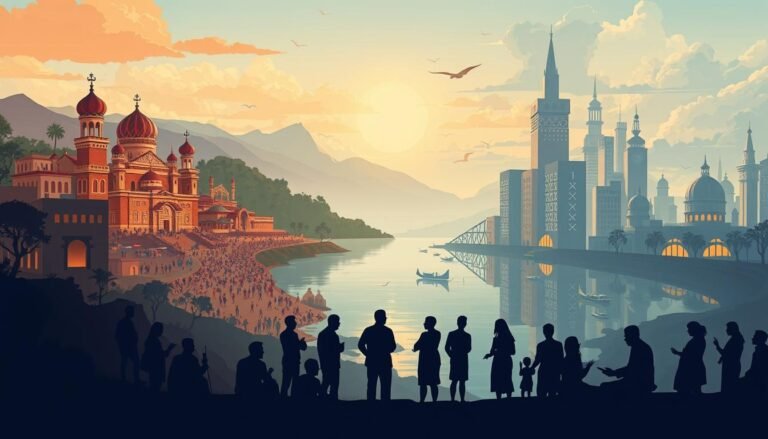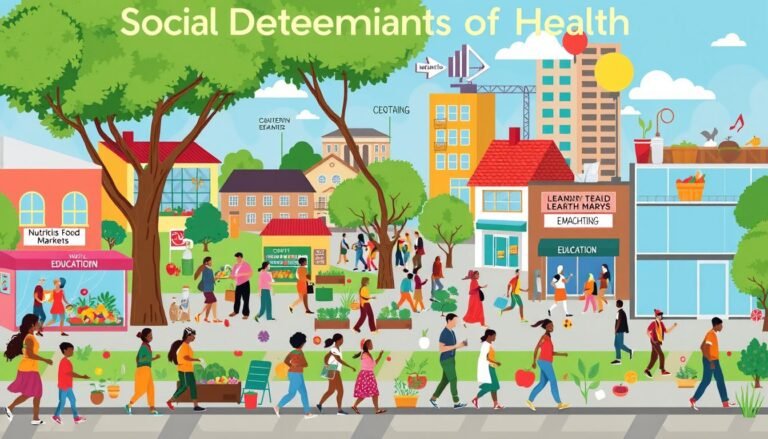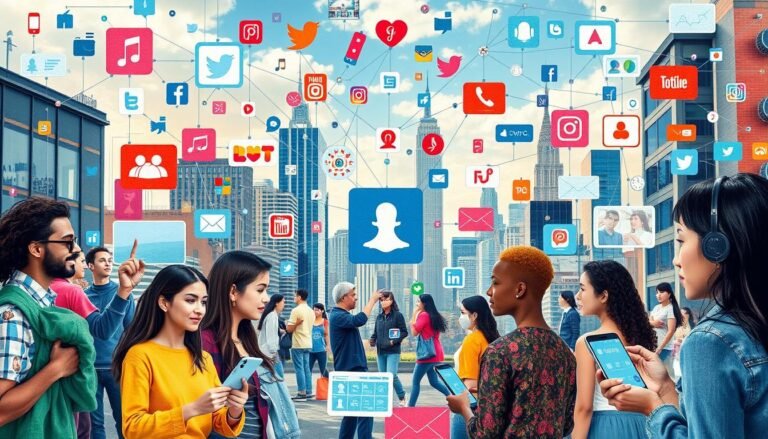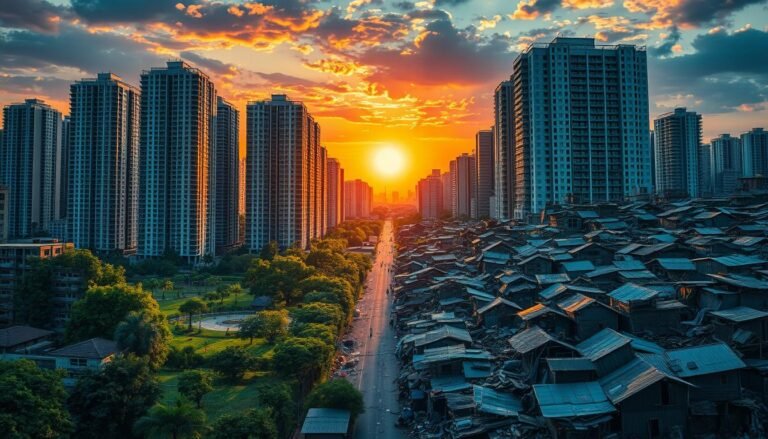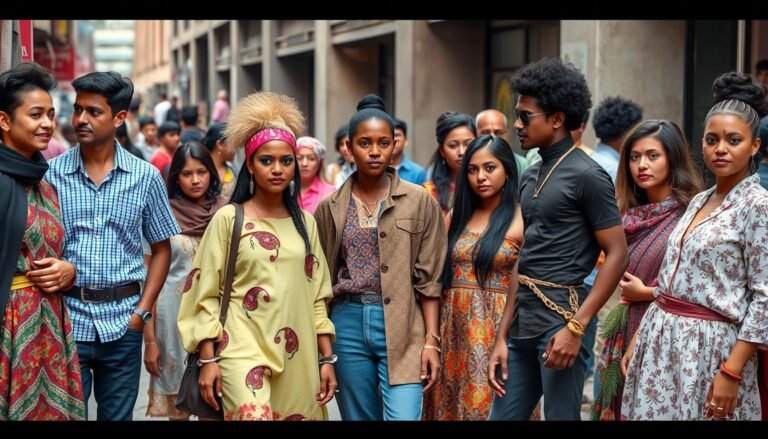The Role of Education in Social Reproduction
Is education really the great equalizer, or does it actually make social divides worse? This question makes us rethink how international school in Singapore affect society.
In 2015, the European Journal of Social Science Education and Research looked into this topic. They showed how education plays a big part in keeping social differences alive.
Education isn’t just about sharing knowledge. It’s a complex process that affects how people move up in society and their place in it. Schools don’t just teach; they shape what the future holds. But are they making things better or just making things worse?
The National Policy on Education wants to teach values like respect and teamwork. But, education is now seen more as a way to get a diploma or a job. This change worries people about how our education system affects social class and moving up in life.
As how we learn changes, we’re focusing more on remembering facts than practical skills. This might help some social groups more than others, making the gap between rich and poor bigger. The big question is: How can we make sure education helps change society for the better?
Key Takeaways
- Education plays a crucial role in social reproduction and societal development
- There’s a shift towards viewing education as a means to an end, rather than for personal growth
- Learning methods increasingly favor memorization over practical application
- Assessment systems often prioritize competitiveness over holistic development
- Social stratification impacts access to education, especially in societies with structural inequality
- Different types of capital (human, cultural, financial, social) influence educational outcomes
Understanding Social Reproduction Theory in Education
Social reproduction theory shows how education keeps social inequalities going. Pierre Bourdieu came up with this idea. It talks about how schools keep the social order the same.
What is Social Reproduction Theory?
This theory says education makes social gaps bigger. Schools help students from rich families more, making it tough for poor students to do well. This keeps the social classes the same over time.
Bourdieu’s Theory and Cultural Capital
Bourdieu’s Theory talks about how cultural capital affects school success. Cultural capital means social assets that help you move up in life. These can be knowledge, skills, or education. Kids from wealthy families usually have more of this, which helps them in school.
Key Elements in Education
The Hidden Curriculum is key in keeping social gaps wide. It’s about the unspoken rules and what’s expected that help students from certain backgrounds. This can make it harder for students from other backgrounds to keep up.
- Embodied cultural capital: Knowledge and skills from upbringing
- Institutionalized cultural capital: Recognized educational credentials
- Hidden curriculum: Unspoken norms and expectations
Knowing about these parts helps us see how education can keep social inequalities going. It shows we need to make education more open to give all students the same chances.
The Relationship Between Education and Social Class
Education is key in shaping our society, but it often keeps the social order in place. The link between a family’s wealth and a student’s school success is clear. Kids from rich families usually do better in school, get higher grades, and get more benefits from education.
There’s a big gap in how schools are funded. The government helps out private schools, making it easier for rich families to get a good education. This means poor families often can’t get the same quality education.
Conflict theorists say the school system helps keep society as it is. They think kids from poor families rarely get a chance to succeed, no matter how hard they try or how smart they are. This keeps the cycle of unfairness in education going.
“Education is a means of maintaining the historical unequal distribution of status and power in society.”
The idea is that education is open to everyone, helping them get rich and important. But in truth, where you stand in society really affects how well you do in school. This leads to a system where some get more chances to go to college and make more money.
| Socioeconomic Status | Educational Opportunities | Long-term Outcomes |
|---|---|---|
| High | Access to private schools, tutors, resources | Better college prospects, higher earning potential |
| Middle | Public schools, some extracurricular activities | Varied college options, moderate earning potential |
| Low | Under-resourced schools, limited support | Fewer college options, lower earning potential |
This shows how education and social class are linked. We need big changes to make education fair for everyone and stop the cycle of staying in the same social class.
Cultural Capital and Its Influence on Educational Success
Cultural capital is a big deal in how well students do in school. It’s all about how family background and social class affect a student’s learning path.
Types of Cultural Capital
Cultural capital has three main types:
- Embodied: Knowledge, skills, and attitudes
- Objectified: Cultural possessions like books or art
- Institutionalized: Formal qualifications and degrees
Impact on Academic Performance
A 2017 study showed that knowing a student’s cultural background can change how teachers see their potential. This can lead to better grades and more chances for success.
Students from richer families usually have more cultural capital. They get better education resources, experiences, and support that help them do well in school.
Family Background and Cultural Capital
Family background is key to getting more cultural capital. How well parents are educated can really predict how well a student will do. For instance, if parents read a lot, it helps students, especially if their parents didn’t go to college.
“What Our Best College Instructors Do” report shows students value connections between course content and real life.
Knowing about cultural capital helps us see what stops some students from doing well. It’s especially true for Black, Latino, Indigenous, and first-generation students. By understanding this, teachers can make learning fairer for everyone.
The Hidden Curriculum and Symbolic Violence in Schools
Schools shape society but can also add to Educational Inequality. The Hidden Curriculum, made up of unwritten rules, affects students a lot. It works with Symbolic Violence to keep social structures in place.
A study in Suceava County found Symbolic Violence in Schools. It looked at how students see symbolic violence, resist teacher authority, and feel inequity in school. This study showed the complex issues in schools.
The Hidden Curriculum includes things needed for doing well in school but not taught officially. In Turkey, a study found that students resisted certain norms linked to the hidden curriculum. This shows how unspoken rules affect students’ experiences and results.
“Hidden curricula include knowledge, practices, and expectations required for success in school but not stated in the official curriculum.”
Symbolic Violence is subtle, often by undervaluing certain cultures or knowledge. In Turkish schools, hidden messages in books and class activities reproduce social inequalities. These messages push students towards certain behaviors and government views.
The COVID-19 pandemic made Educational Inequality clear. Many students lacked a laptop or internet, showing a digital divide. Also, more students from wealthy schools went to college than from poor ones. These facts highlight the ongoing struggle for fair education.
The Role of Education in Social Reproduction
Education is key in shaping our society, but it often keeps social gaps wide open. Schools are where we teach new generations, but they can also keep social differences going.
Perpetuating Social Hierarchies
Schools help keep social structures alive without meaning to. Those from wealthier families start school with more cultural benefits. This gives them a leg up in school, leading to better grades and chances for success.
Impact of Educational Policies
Education policies can also keep social reproduction going. The National Policy on Education tries to help everyone, but it might help some more than others. Tests that focus on being the best can leave behind students who don’t have the same cultural background.
Breaking the Cycle
Trying to stop social reproduction in schools is hard. It’s built into our society. Lately, there’s a move towards teaching practical skills over just memorizing facts. This could make things more fair, but it’s hard for students without the right cultural support.
“Education shows positive and negative perceptions and impacts in societies.”
To fix educational inequalities, we need to see how social class affects students. Bourdieu’s ideas help us understand, but we must also look at race, gender, and personal drive. These factors shape how students do in school and break the cycle of social reproduction.
Socioeconomic Status and College Access
The connection between socioeconomic status and college access is a big problem in education. Since 1970, more students are going to college, but the gap between rich and poor families is getting bigger. This shows the ongoing struggle to make education equal for everyone.
Family wealth greatly affects a student’s chance to go to college. Rich families often have more resources, live in areas with good schools, and can pay for activities that help with college apps. On the other hand, students from poorer families face big challenges:
- Underfunded schools with fewer college-prep courses
- Difficulty attracting and retaining effective teachers
- Limited access to extracurricular activities
- Lower academic expectations and assumptions
This means students from wealthier families have a bigger chance to go to college and get into top schools. These top schools are mostly filled with students from rich families, keeping the cycle of social inequality going.
“Education is the great equalizer, but only if everyone has equal access to it.”
To fix this, we need to do many things. We must improve funding for schools in poor areas, give better college prep resources, and support students from low-income backgrounds. By doing this, we can work towards making education fair for everyone, no matter their family’s wealth.
The Impact of Standardized Testing on Social Reproduction
Standardized tests greatly affect educational inequality. They often help some social groups more than others. This makes a bigger gap between students from different backgrounds.
Favoring Certain Social Groups
Tests usually help students from wealthy backgrounds. Studies show that racial and ethnic differences in scores start early in school. Asian American students usually do better than non-Hispanic white students in reading and math.
Test Scores and Socioeconomic Status
There’s a strong link between test scores and how wealthy a family is. Kids with college-educated parents usually do better in math and reading tests. This edge in tests often means more chances for college and scholarships.
This keeps the cycle of unequal education going.
Alternatives to Traditional Testing
Educators are looking for new ways to test students instead of traditional tests. Some ideas include:
- Portfolio assessments
- Project-based evaluations
- Field trips
- Oral tests
- Scientific article reviews
These methods try to give students a fair chance to show what they know. They lessen the effect of family wealth on school success. By avoiding high-pressure tests, schools can encourage creative teaching and deep thinking.
This could help break the cycle of social reproduction in education.
Strategies for Promoting Educational Equity
Educational equity is vital in today’s world. We need a plan that covers many parts of our education system. Let’s look at some ways to make education fairer and help people move up in society.
One effective strategy is to invest in early childhood education. This helps kids from poor families avoid poverty. By giving them good education early, we make sure all kids start on an equal footing for success later.
Another strategy is using affirmative action and scholarships. These help close the gap in education and support underprivileged groups. They make sure talented students from all backgrounds can get a good education.
- Resource allocation to underfunded schools
- Financial aid programs for low-income students
- Diversity initiatives in higher education
- Improved organizational leadership in educational institutions
Policy makers should focus on the digital divide. In our tech-filled world, knowing how to use technology is key to moving up. Making sure all students have tech and online learning opens new doors and prepares them for the future.
“Education is the most powerful weapon which you can use to change the world.” – Nelson Mandela
By using these strategies, we can make our education system fairer. This helps students and makes society more just and prosperous. Educational equity lets all students reach their full potential and move up in life.
The Long-term Consequences of Social Reproduction in Education
Education shapes our future. The long-term effects of social reproduction in education are huge. They affect both individuals and communities.
Economic Implications for Individuals and Society
Social reproduction in education means big income gaps. Kids from rich families do better because they have more resources. This makes the wealth gap bigger.
Social Mobility and Intergenerational Inequality
The way we teach can help or hurt social mobility. Sadly, we’re seeing more inequality between generations. Kids from poor families struggle with bad schools and less access to hard courses.
Perpetuation of Power Structures
Education often teaches the values of the rich. This helps those from wealthy backgrounds stay on top. It keeps the same people in power, affecting our society and democracy.
We need policies that help everyone, no matter their background. By tackling these issues, we can aim for a fairer, better society for everyone.
Conclusion
Educational inequality is a big problem in our society. Research in the European Journal of Social Science Education and Research shows this. The study from December 2015 talks about how education helps improve a nation and pass on culture. But, it also shows how schools keep social classes in place.
The National Policy on Education has goals like valuing each person and working together. But, what really happens is often different. Our schools now focus more on preparing for jobs and just memorizing facts. This shift in education might make social gaps wider instead of closing them.
Standardized tests try to be fair but often reflect the values of the dominant culture. This can make social classes even more fixed. Not everyone has the same chance to get good education, which makes things worse. To fix this, we need a big change in how we reform education. We must tackle these deep-seated inequalities directly.
Source Links
- 21 Social Reproduction of Education
- Pierre Bourdieu’s Social Reproduction in Education
- It is a well known fact that educators have been searching for strategies to improve reading comprehension in their students
- Microsoft Word – JUQQMUXVAC.docx
- Education and social reproduction
- The Theory of Cultural Capital in Higher Education and Its Influence on Equity – Every Learner Everywhere
- ‘Cultural capital’: Its influence in education & the workplace
- Cultural Capital and Its Impact on Academic Achievement: Sustainable Development of Chinese High School Students
- THE ROLE OF HIDDEN CURRICULUM IN THE RESISTANCE BEHAVIORS OF UNDERGRADUATE STUDENTS — PSYCHOLOGICAL COUNSELING AND GUIDANCE EXAMPLE
- It’s a Shit Show, and It’s Fine: Symbolic Nonviolence Practices in Higher Education in 2020
- Family socioeconomic status and college attendance: A consideration of individual-level and school-level pathways
- School tracking and its role in social reproduction: reinforcing educational inheritance and the direct effects of social origin
- Testing and Social Stratification in American Education
- Time to Shift Away from Standardized Testing?
- Longdom Publishing SL | Open Access Journals
- The Term Equity in Education: A Literature Review with Scientific Mapping in Web of Science
- Understanding Social Reproduction in Education Systems – Education Uplifted
- Social reproduction
- The Risks of Social Reproduction: the middle class and education markets
- How does education contribute to the reproduction of cultural values and norms | Genius High Copy


